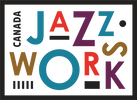Live Ensemble Collaboration Over the Internet
Author: Allan Silburt
[email protected]
Date: April 7, 2021
Disclaimer: The opinions expressed in this article are those of the author and are not necessarily those of Ottawa Jazz Happenings or of JazzWorks Canada.
Back in July 2020, I submitted an article to Ottawa Jazz Happenings entitled JamKazam for Live Remote Ensemble Practices. After another eight months of active live playing I have learned a lot and greatly expanded my on-line music engagements. This article is really a companion for the earlier one, so I won’t repeat discussions about equipment and setup except where relevant.
I think the most significant developments over this time are the improvements in technology and performance of the tools on offer and their transition from free to pay per use. This is actually a welcome sign of maturity and broader use – I don’t at all mind paying for services that are so vital to my musical life. Let me summarize in order of importance:
Happy playing!
Allan
[email protected]
I think the most significant developments over this time are the improvements in technology and performance of the tools on offer and their transition from free to pay per use. This is actually a welcome sign of maturity and broader use – I don’t at all mind paying for services that are so vital to my musical life. Let me summarize in order of importance:
- In addition to JamKazam, which I reviewed in the last article, there are two other important platforms that enable low-latency live music collaboration: Jamulus and JackTrip. Each has evolved over the course of the year with improved stability and performance. Here is a quick summary of what distinguishes them:
- JamKazam is a distributed “mesh network” platform. That means that each participant is sending their signal to everyone else, and the mix is assembled locally.
- Jamulus is a server-based platform. Signals are sent to a central server which assembles and then distributes the mix back to participants.
- JackTrip is similar to Jamulus but places a stronger emphasis on sound quality at the expense of consuming more bandwidth. I don’t have any experience with this platform yet.
- Latency: Having played now with quite a number of people, it’s pretty clear what the impact of various levels of latency between participants is and on the experience of various size ensembles. Harsh as it may sound, the latency characteristic of a player’s connection is a table stake for being a music partner. Latency is not only a function of physical separation. Unfortunately, two players in the same neighbourhood in Ottawa can be frustrated trying to play, whereas two players in distant cities can be quite successful. If you care about playing live during this COVID time, don’t hesitate to change service providers. For players in Ottawa, the biggest handicap at the moment is Rogers internet and its resellers. For technical reasons beyond the scope of this article, Rogers internet traffic presently takes the scenic route around the block and the result is greatly increased latency. Presently, Bell Fibe services have the lowest latency, and the contrast is remarkable. Also, it does not appear to be necessary to have premium Bell Fibe service to get this low latency – it is not a function of the connection bandwidth.
- With my low latency connection, my radius of collaborators is enlarged. I have three regular ensembles that I play in. One is a duet with a fellow in Connecticut whom I met in an open jam session on JamKazam. Another is duet with a violinist in Long Island, NY whom I met at a concert in Mexico last year and took some lessons from. The third is a five-person ensemble of local musicians. For the two duet sessions, I use JamKazam. The latency between us is about 30 msec (best case) which is sufficient for moderate tempos and suits the kind of music we have so far been playing. JamKazam seems to provide the best experience (compared to Jamulus). I believe this is because the extra hop to the server required between two distant people on Jamulus is a burden to the total round-trip times. For the five-person ensemble I use Jamulus (actually I’m using SynchSpace Live – more on that below). With more participants, the server architecture is significantly better. Connections are stable and reliable, and the latency is so small as to be of no consequence to our playing together. JamKazam on the other hand, appears to be become less stable as more participants are added.
- The arrival of Adrian Cho’s Syncspace.Live enterprise has been a game changer. Adrian is surely familiar to many on this list as the leader of the Ottawa Jazz Orchestra. But Adrian has burst out to engage us with more of his talents – as a technology leader and entrepreneur. Adrian has packaged up a kit of tools that sit on top of Jamulus and JackTrip. In addition, Adrian is providing the host servers in key urban centres that meet his standards for local latency. Adrian’s kit includes a video overlay as well as facilities to support performance live streaming (which I haven’t used). The result is a system that just works, hiding the nasty details of server latency and performance as well as video bandwidth burden. There is a significant fee for SynchSpace live, but it is organized as a “space” rather than an individual user license. That means we can share it among our band members, like a piece of equipment or a studio space rental which makes it much more affordable.
Happy playing!
Allan
[email protected]
